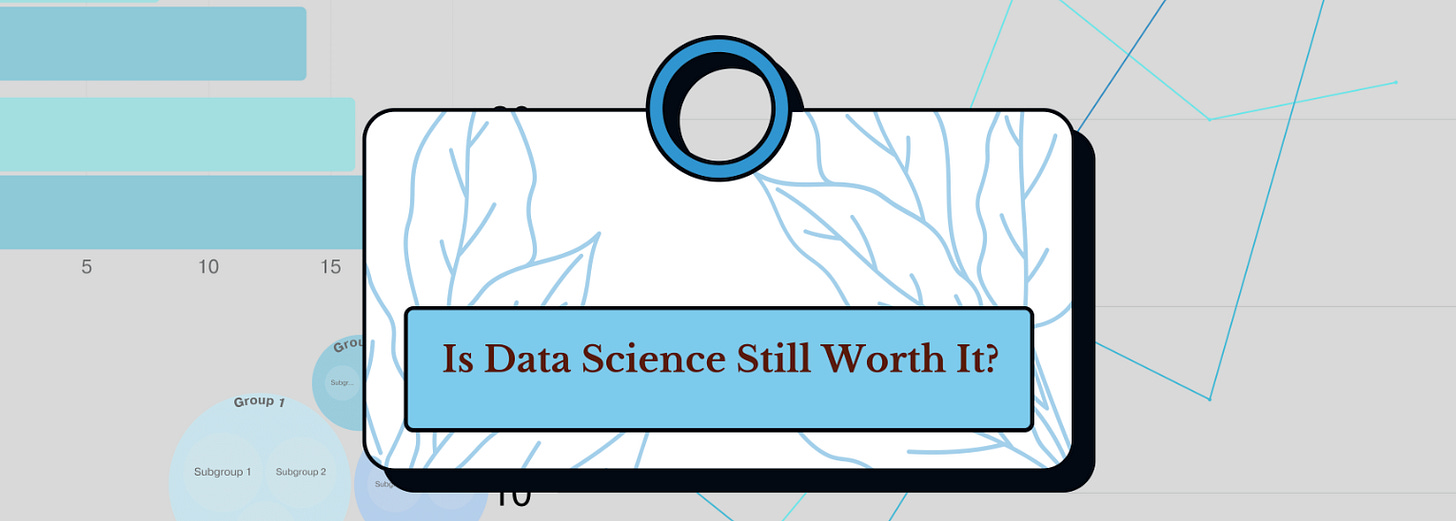🗞️ DevTips Weekly - Issue #5
Cloud-Hosted RAG, Docker containers, Distributed System Design Patterns, Why some hate Go
Welcome to another DevTips Weekly issue! 📰 This week contains some handpick articles and resources to keep you at the forefront of technology. Stay with me to review these articles from last week:
🤖 Develop a Cloud-Hosted RAG App With an Open Source LLM
🐳 Why should I use Docker containers vs. VMs for my cloud apps?
🏗️ Most-Used Distributed System Design Patterns
👨💻 8 reasons developers love Go—and 8 reasons they don’t
🎓 Is Data Science Still Worth It In 2024?
Develop a Cloud-Hosted RAG App With an Open Source LLM
This guide explains how to create a custom 🤖 AI application using BentoML, LangChain, and MyScaleDB. It highlights the benefits of using ☁️ cloud-hosted open-source LLMs for 💸 cost savings and scalability. The tutorial walks through extracting data from Wikipedia, splitting text into manageable chunks, and generating embeddings. It also covers deploying models on BentoML, storing data in MyScaleDB, and performing retrieval-augmented generation (RAG) tasks. The guide emphasizes the simplicity and flexibility of BentoML for deploying machine learning models and the high performance of MyScaleDB for managing vector data.
Why should I use Docker containers vs. VMs for my cloud apps?
This article, in a very simple way, describes that what are the advantages of using Docker containers vs. VMs for cloud applications. In short, these are the advantages:
⏩ Speed: Containers deploy in seconds and consume less memory compared to virtual machines.
🚀 Scalability: Containers can dynamically scale, especially when managed by tools like Kubernetes.
💰 Cost Efficiency: By automating scaling and minimizing resource usage, containers reduce operational costs.
🌐 Portability: Docker containers are highly portable and run consistently across different environments.
Most-Used Distributed System Design Patterns
Distributed system design patterns like Ambassador 🛡️, Circuit Breaker 🔌, and CQRS 📊 provide essential frameworks for creating reliable and efficient distributed applications.
For example, The Ambassador pattern offloads auxiliary tasks such as logging and monitoring, allowing the main application to focus on business logic, while the Circuit Breaker pattern prevents cascading failures by halting requests when a service becomes unavailable. The CQRS pattern enhances performance by separating read and write operations into distinct databases. Additionally, patterns like Event Sourcing maintain a detailed record of events for better auditing and debugging, and the Sidecar pattern manages cross-cutting concerns by deploying auxiliary components alongside the main service containers. Leader Election, Publisher/Subscriber, and Sharding further enhance system robustness by ensuring coordinated activities, asynchronous communication, and efficient data distribution. Finally, the Bulkhead pattern increases fault tolerance by isolating system components, and the Cache-Aside pattern improves read performance by strategically loading data into the cache.
Together, these patterns address the complexities of distributed computing, ensuring scalable and resilient system architectures. To know more about these patterns, highly recomended to read this article.
8 reasons developers love Go—and 8 reasons they don’t
Go (Golang) was created by Google in 2007 to address large-scale data and network challenges. It officially debuted in 2009, with version 1.0 released in 2012. 🚀
Go stands out for its simplicity and ease of learning, making it accessible to both new and experienced programmers. 👩💻👨💻
Developers have mixed reactions to Go. Some appreciate its straightforwardness, while others miss advanced features found in other languages. 🤔
One notable aspect of Go is its explicit error handling within functions, which some find beneficial for planning and resilience, while others consider it cumbersome. 🙌🤷♂️
This article will discuss the pros and cons of Go and the reasons that programmers choose this language or hate it!
Is Data Science Still Worth It In 2024?
The relevance of data science is a topic of debate, with some considering it obsolete while others see it evolving, this article reviews this question from these perspectives:
🌐 Industry Demand: Tech-driven sectors like finance, healthcare, and manufacturing still rely heavily on data science, emphasizing the need for analytical skills.
🚀 Career Opportunities: Data science remains a highly sought-after profession, offering growth prospects and specialization opportunities.
🎓 Education and Certification: Accessible online courses, such as DataCamp’s Data Scientist Certification, provide pathways for entry into the field and skill development.
You can also support me in buying a latte ☕️ !(one time or monthly):







